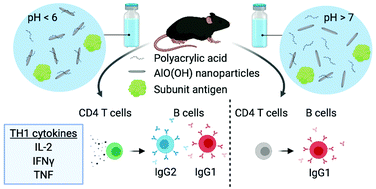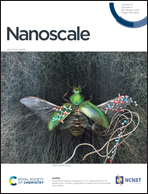Physicochemical structure of a polyacrylic acid stabilized nanoparticle alum (nanoalum) adjuvant governs TH1 differentiation of CD4+ T cells
Abstract
The growing shift to subunit antigen vaccines underscores the need for adjuvants that can enhance the magnitude and quality of immune response. Aluminum salts or alums are the first adjuvants with a long history of clinical use. Alum predominantly induces T helper 2 (TH2) type immunity in animal models, characterized by antibody production with little to no induction of antigen-specific T cells. The lack of cell-mediated or T helper 1 (TH1) immunity makes alum adjuvants ineffective in mounting durable responses against diseases like tuberculosis, malaria and HIV. Here we show that the clinically approved adjuvant, Alhydrogel, reformulated as a stable nanoparticle (nanoalum) with the anionic polymer polyacrylic acid (PAA) induces structure-dependent TH1 response against the recombinant tuberculosis antigen ID93. We found that PAA adsorption to Alhydrogel was a key parameter affecting nanoalum adjuvanticity. Adsorption depended on various factors, most notably formulation pH, and directly correlated with immunological response in mice, enhancing known hallmarks of a murine TH1 type response: induction of antigen-specific IFN-γ secreting CD4+ T cells and IgG2c subclass of antibodies. Our results demonstrate a correlation between a measurable nanoalum property and immunological response, providing a structural basis to derive a beneficial immunological outcome from a clinically approved adjuvant.



 Please wait while we load your content...
Please wait while we load your content...